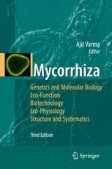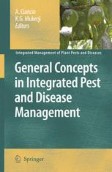Search
Search Results
-
Mycorrhizae: An Overview
Mycorrhizae establish symbiotic relationships with plants and play an essential role in plant growth, disease protection, and overall soil quality....
-
The Functional Groups of Micro-organisms Used as Bio-indicator on Soil Disturbance Caused by Biotech Products such as Bacillus thuringiensis and Bt Transgenic Plants
Insects are usually controlled with insecticides. Of the insecticides 5 % are biological, and more than 90 % of biological insecticides are based on...
-
Effects of Interactions of Arbuscular Mycorrhizal Fungi and Beneficial Saprophytic Mycoflora on Plant Growth and Disease Protection
Arbuscular mycorrhizal (AM) fungi and beneficial saprophytic mycoflora like plant growth promoting fungi (PGPF) are capable of promoting plant growth...
-
Arbuscular Mycorrhizal Fungi Communities in Major Intensive North American Grain Productions
With population increase, urban sprawl on some of the best agricultural soils and the interest for biofuels, serious pressures have been created on...
-
Biocontrol of Pythium dam**-off in cucumber by arbuscular mycorrhiza-associated bacteria from the genus Paenibacillus
The Pythium biocontrol features of 17 Paenibacillus strains, all previously isolated from the rhizosphere, hyphosphere or bulk soil from mycorrhizal...

-
Colonization of Plant Roots by Pseudomonads and AM Fungi: A Dynamic Phenomenon, Affecting Plant Growth and Health
Because of their enormously large range of plant hosts and role in plant nutrition, arbuscular mycorrhizal (AM) fungi represent an extraordinarily...
-
Responses of soil microbial catabolic diversity to arbuscular mycorrhizal inoculation and soil disinfection
Although it is usually admitted that arbuscular mycorrhizal (AM) fungi are key components in soil bio-functioning, little is known on the response of...

-
Aerobic and Anoxic Growth and Nitrate Removal Capacity of a Marine Denitrifying Bacterium Isolated from a Recirculation Aquaculture System
Bacterial biofilters used in marine recirculation aquaculture systems need improvements to enhance nitrogen removal efficiency. Relatively little is...

-
Plant Associated Soil Micro-organisms
Roots constitute important plant organs for water and nutrient uptake. However, they also release a wide range of carbon compounds of low molecular...
-
Mycorrhizae In The Integrated Pest And Disease Management
. Plant diseases cause serious losses in crop production and pesticide applications are currently the main way deployed for control. Due to severe...
-
Plant-Microbe Interactions in the Rhizosphere and Nutrient Cycling
Microbial communities carry out fundamental processes that contribute to nutrient cycling, plant growth and root health. Microorganisms play a key...
-
Arbuscular mycorrhizas and ectomycorrhizas of Uapaca bojeri L. (Euphorbiaceae): sporophore diversity, patterns of root colonization, and effects on seedling growth and soil microbial catabolic diversity
The main objectives of this study were (1) to describe the diversity of mycorrhizal fungal communities associated with Uapaca bojeri , an endemic...

-
Ability of Emericella rugulosa to mobilize unavailable P compounds during Pearl millet [Pennisetum glaucum (L.) R. Br.] crop under arid condition
Phosphate solubilizing microorganisms are ubiquitous in soils and could play an important role in supplying P to plants where plant unavailable P...
-
Distribution of Cren- and Euryarchaeota in Scots Pine Mycorrhizospheres and Boreal Forest Humus
Archaeal 16S rRNA gene sequences have been found in a variety of moderate-temperature habitats including soil and rhizospheres. In this study, the...

-
Role of phosphate-solubilizing microorganisms in sustainable agriculture — A review
Compared with the other major nutrients, phosphorus is by far the least mobile and available to plants in most soil conditions. Although phosphorus...
-

-
Stimulation of nitrogen fixation in soddy-podzolic soils with fungi
Stimulation of nitrogen fixation in soddy-podzolic soils is related to the hydrolytic activity of fungi decomposing plant polymers. It was found that...
-
Interactions Between Plant Growth Promoting Fungi and Arbuscular Mycorrhizal Fungus Glomus Mosseae and Induction of Systemic Resistance to Anthracnose Disease in Cucumber
Cucumber plants were treated with plant growth promoting fungi (PGPF), Phoma sp. (isolates GS8-2 and GS8-3) and Penicillium simplicissimum (isolate...
-
Mycorrhizoremediation—An enhanced form of phytoremediation
Study of plant roots and the diversity of soil micro biota, such as bacteria, fungi and microfauna associated with them, is important for...
-

